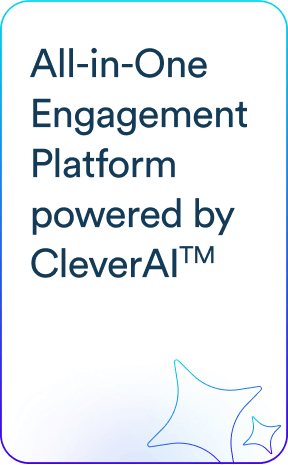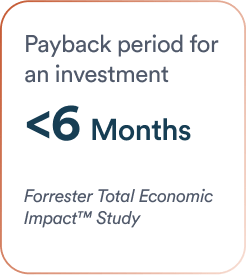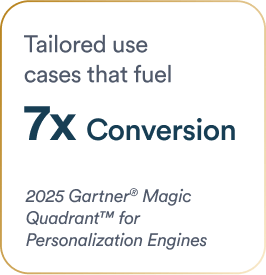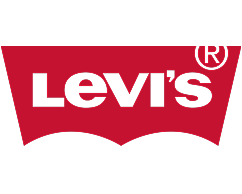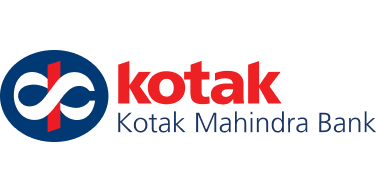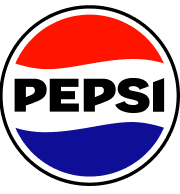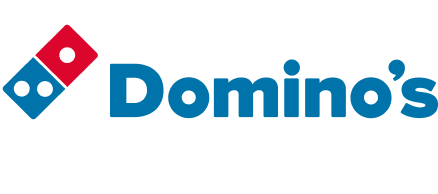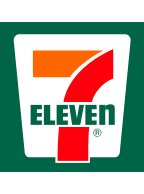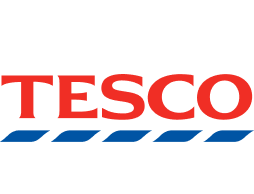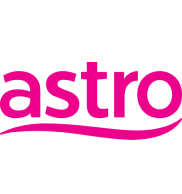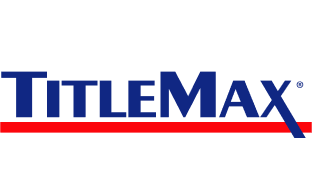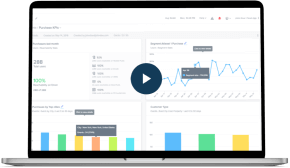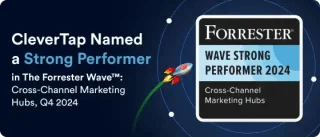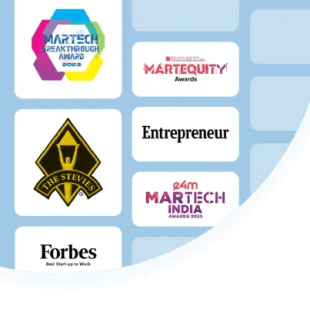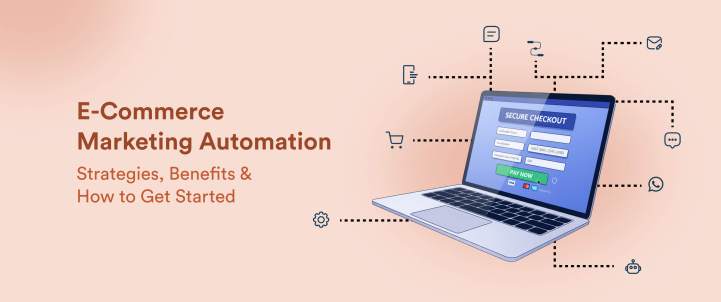Over the last decade, e-commerce marketing has evolved from product promotions to highly targeted, data-driven strategies that meet rising consumer expectations. The advances and demands for personalized and timely communication have led to e-commerce marketing automation acting as a growth engine, with 77% of e-commerce marketers reporting increased conversion rates, highlighting its impact on business growth.
Today, e-commerce marketing automation is essential for brands seeking to boost customer engagement, improve conversions, and build lasting loyalty. In this article, you will learn all about automation in e-commerce, from use cases to strategies.
What Is E-Commerce Marketing Automation?
E-commerce marketing automation refers to the application of technology that streamlines, automates, and measures marketing tasks and workflows specifically for online retail businesses. It enables brands to deliver targeted, personalized communications across various digital channels without manual intervention.
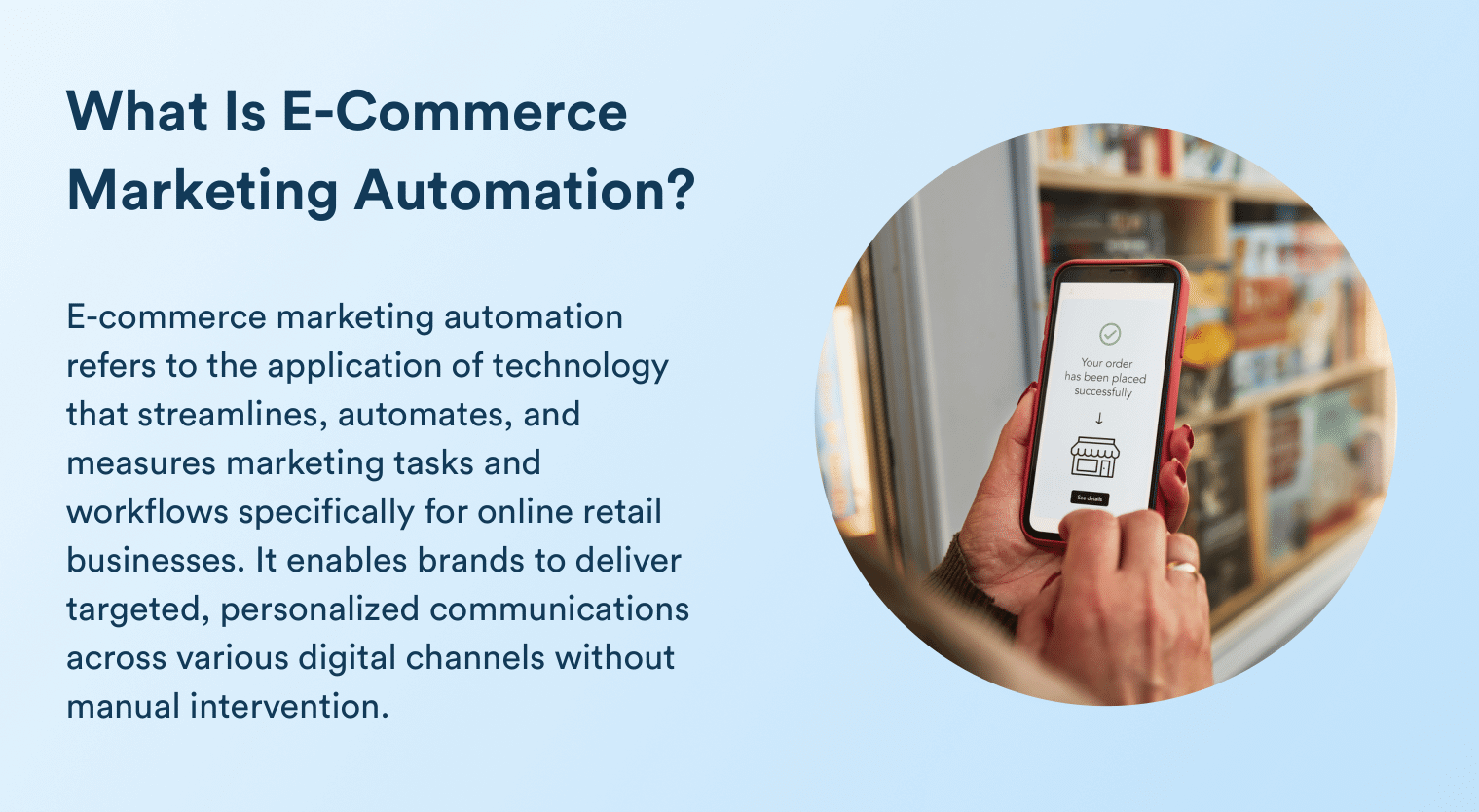
E-commerce marketing automation specializes in responding to shopper behaviors and purchase journeys, triggering personalized, real-time messages based on actions like browsing, cart activity, or purchases. For example, when a shopper abandons a cart, the system can automatically send a reminder email or push notification to encourage completion. Similarly, it can deliver tailored product recommendations post-purchase or alert customers about back-in-stock items.
With the help of data such as browsing history, purchase patterns, and segmentation criteria, automation enables brands to engage customers with the right content at the right moment, driving higher conversions and enhancing the overall shopping experience.
5 Reasons Brands Should Implement E-Commerce Marketing Automation
E-commerce marketing automation is essential for efficiency, personalization, and competitiveness. Here are the key benefits driving its adoption.
1. Save Time and Resources
E-commerce automation streamlines repetitive tasks such as order updates, abandoned cart reminders, and social campaign scheduling, letting marketers focus on growth and strategy instead of daily busywork.
Automating routine activities can help boost productivity by up to 30%. This operational efficiency cuts costs and allows teams to dedicate more time to campaign optimization and creative problem-solving.
An e-commerce platform doubled its business by leveraging CleverTap’s RFM segmentation and real-time engagement analytics to optimize cycles and timing, thus saving resources.
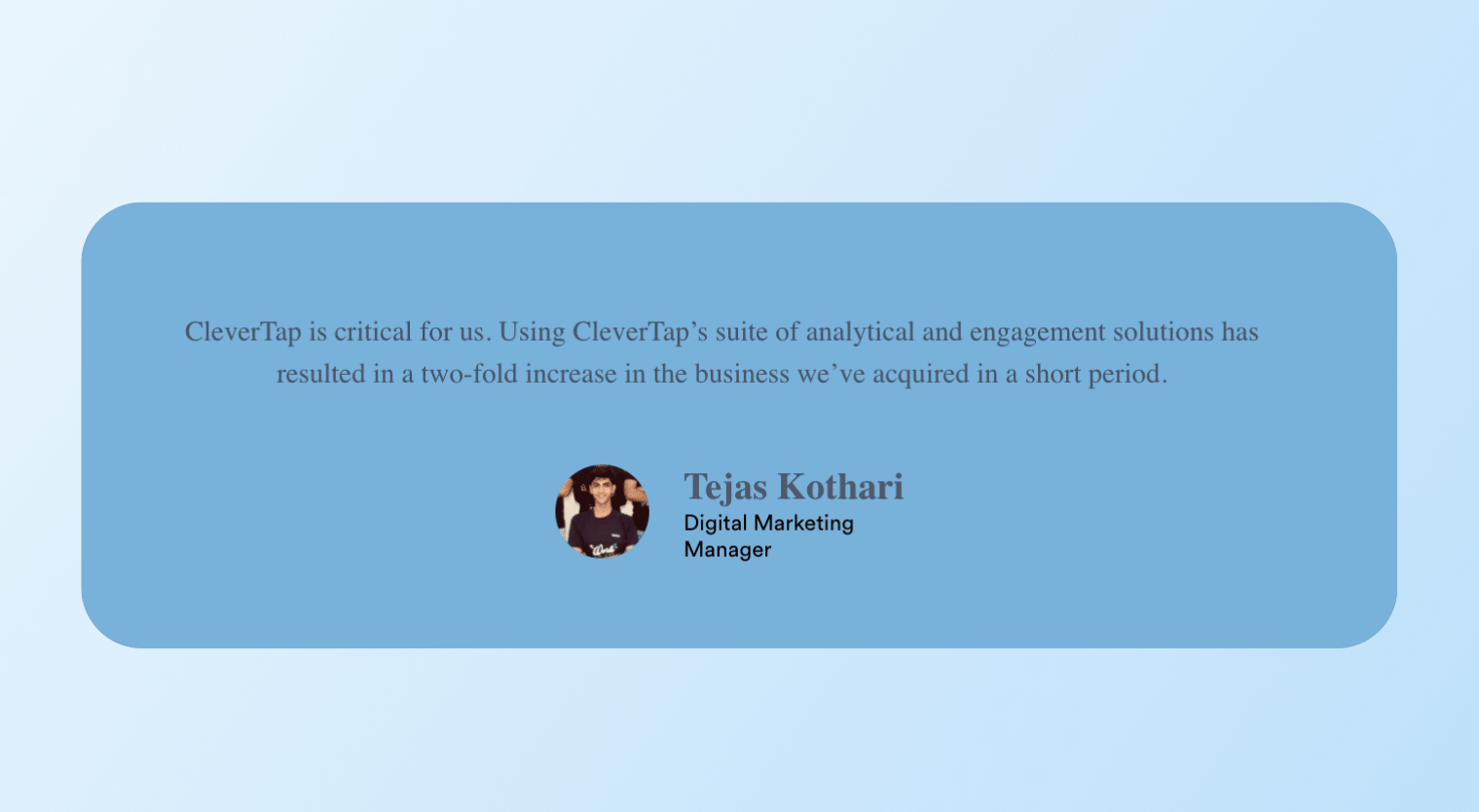
2. Improve Customer Experience
E-commerce automation enables brands to deliver real-time, personalized interactions at every stage of the buyer’s journey, resulting in more relevant communications and a smoother service experience.
Automated workflows ensure prompt responses to queries, tailored product suggestions, and timely follow-ups, creating a seamless and satisfying shopping experience for customers.
3. Increase Conversions and Lifetime Value
Automated, data-driven campaigns significantly increase conversion rates by targeting the right customers with the right message at the optimal time. Brands also achieve higher average order values and repeat purchase rates, improving overall customer lifetime value and long-term profitability.
A leading UAE e-commerce brand boosted conversions by 400% using CleverTap’s personalized and segmented automation journeys, transforming generic notifications into context-rich, product-specific campaigns.
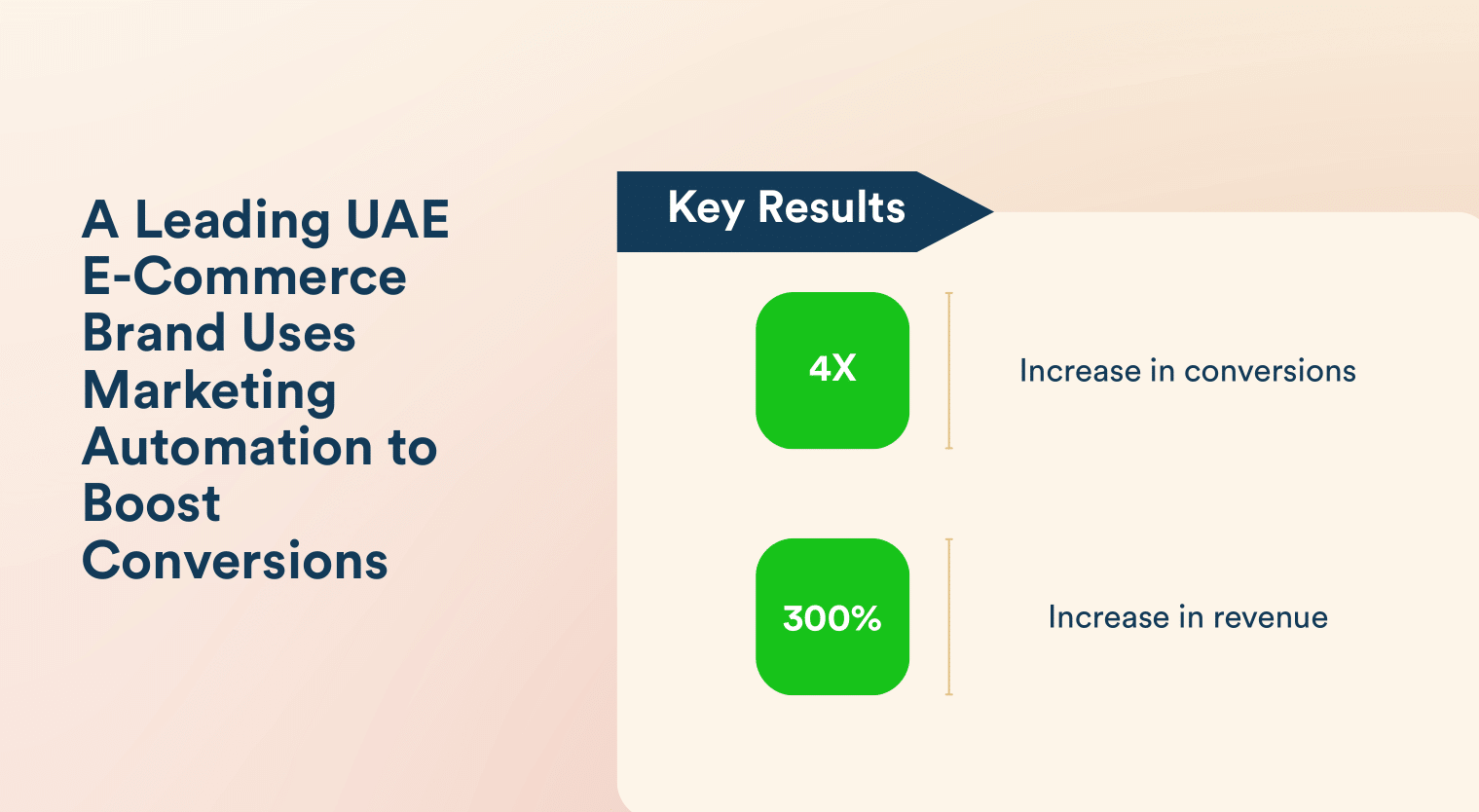
4. Reduce Errors and Improve Data Accuracy
E-commerce marketing automation helps prevent costly mistakes. It reduces human error by streamlining data workflows, ensuring accurate records on orders, inventory, and customer preferences, leading to fewer issues, better decisions, and greater customer trust.
5. Effective Fraud Detection and Data Protection
E-commerce fraud costs companies $48 billion annually, and nearly 43% of shoppers are affected by payment fraud. E-commerce marketing automation helps stop suspicious transactions in real time before they lead to financial losses and reputational harm.
It strengthens fraud detection and data protection by using AI- and ML-driven monitoring to stop suspicious transactions, ensure regulatory compliance like GDPR, and safeguard customer trust.
Learn more about how AI and ML helps create effective marketing automation campaigns.
Top 8 E-Commerce Marketing Automation Use Cases
Below are key e-commerce automation campaigns that drive engagement, conversions, and loyalty across e-commerce funnels.
1. Welcome Series
A set of automated messages sent to new subscribers or customers to introduce the brand and set expectations.
Funnel Stage: Top/Middle (Onboarding)
Channels: Email, SMS, Push
Welcome series build early trust by sharing brand values, popular products, and exclusive offers. Personalization here increases the chances of turning new visitors into loyal customers, creating a strong foundation for long-term engagement.
2. Cart Abandonment Recovery
Automated reminders sent to shoppers who leave items in their cart without completing the purchase.
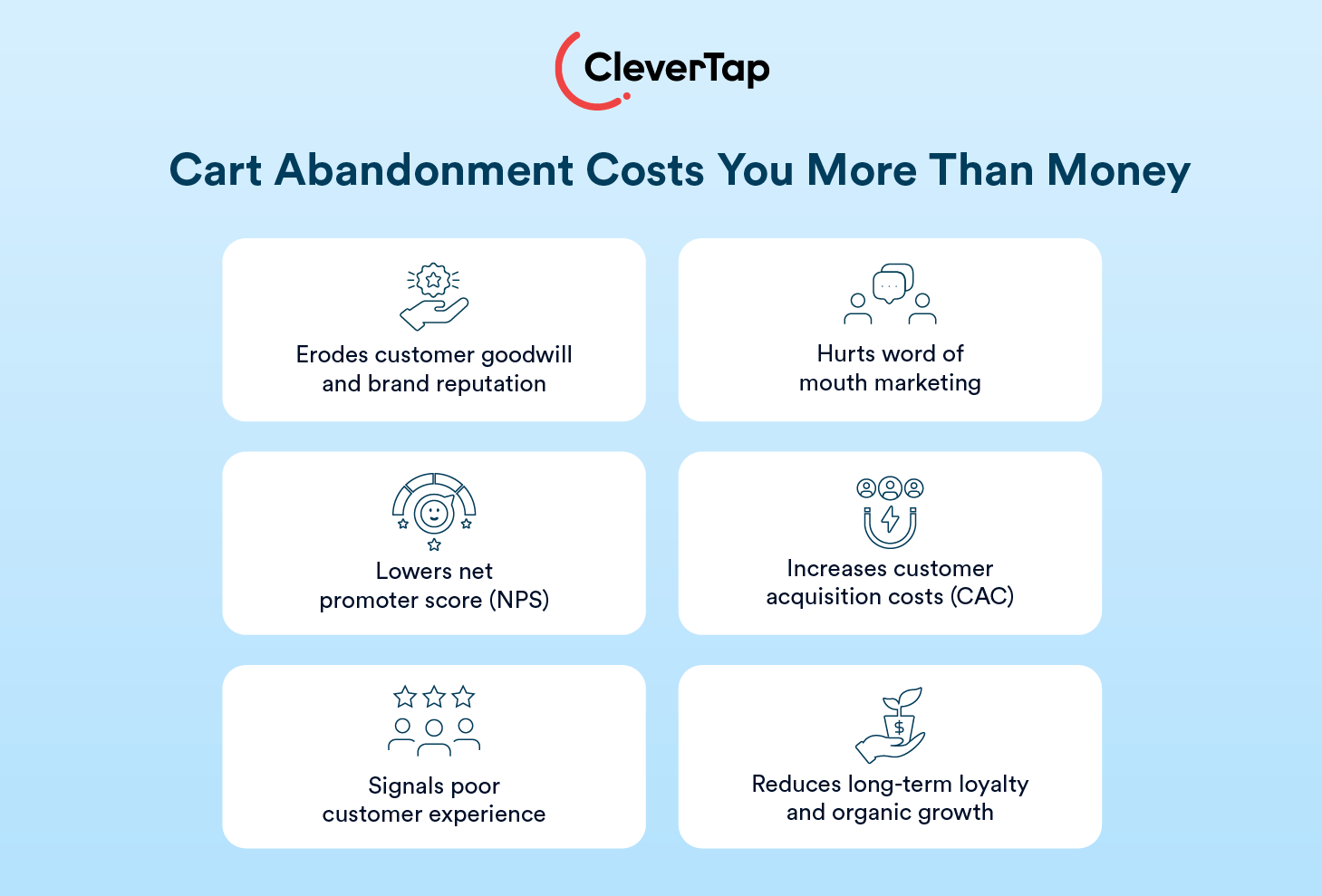
Funnel Stage: Bottom (Conversion)
Channels: Email, SMS, Push
These targeted nudges recover lost sales by showing product images, offering discount incentives, or creating urgency through limited-time offers. In 2024, nearly 70% of carts are abandoned; this use case is crucial for reclaiming revenue.
3. Post-Purchase Upsell or Cross-Sell
Messaging suggesting complementary, upgraded, or related products after a purchase.
Funnel Stage: Post-purchase (Retention and Revenue Growth)
Channels: Email, SMS, In-App
By analyzing customer purchases, brands can recommend relevant products that enhance the initial purchase experience. This strategy boosts customer lifetime value by encouraging repeat sales without extra acquisition cost.
4. Browse Abandonment
Outreach to users who show interest by browsing product pages but don’t proceed to cart.
Funnel Stage: Middle (Consideration)
Channels: Email, Push, SMS
Browse abandonment campaigns re-engage browsers with reminders, product features, or social proof to push them toward buying. This proactive approach increases conversion likelihood from window shoppers.
5. Loyalty or Reward Nudges
Automated updates about points earned, progress to rewards, or exclusive loyalty offers.
Funnel Stage: Retention
Channels: Email, SMS, Push, In-App, WhatsApp
Loyalty nudges encourage customers to stay active in rewards programs, driving repeat purchases and brand affinity. These timely reminders make loyalty programs more engaging and effective.
Learn how to build e-commerce loyalty programs for your brand.
6. Win-Back Campaigns
Targeted outreach to customers who have become inactive or stopped purchasing.
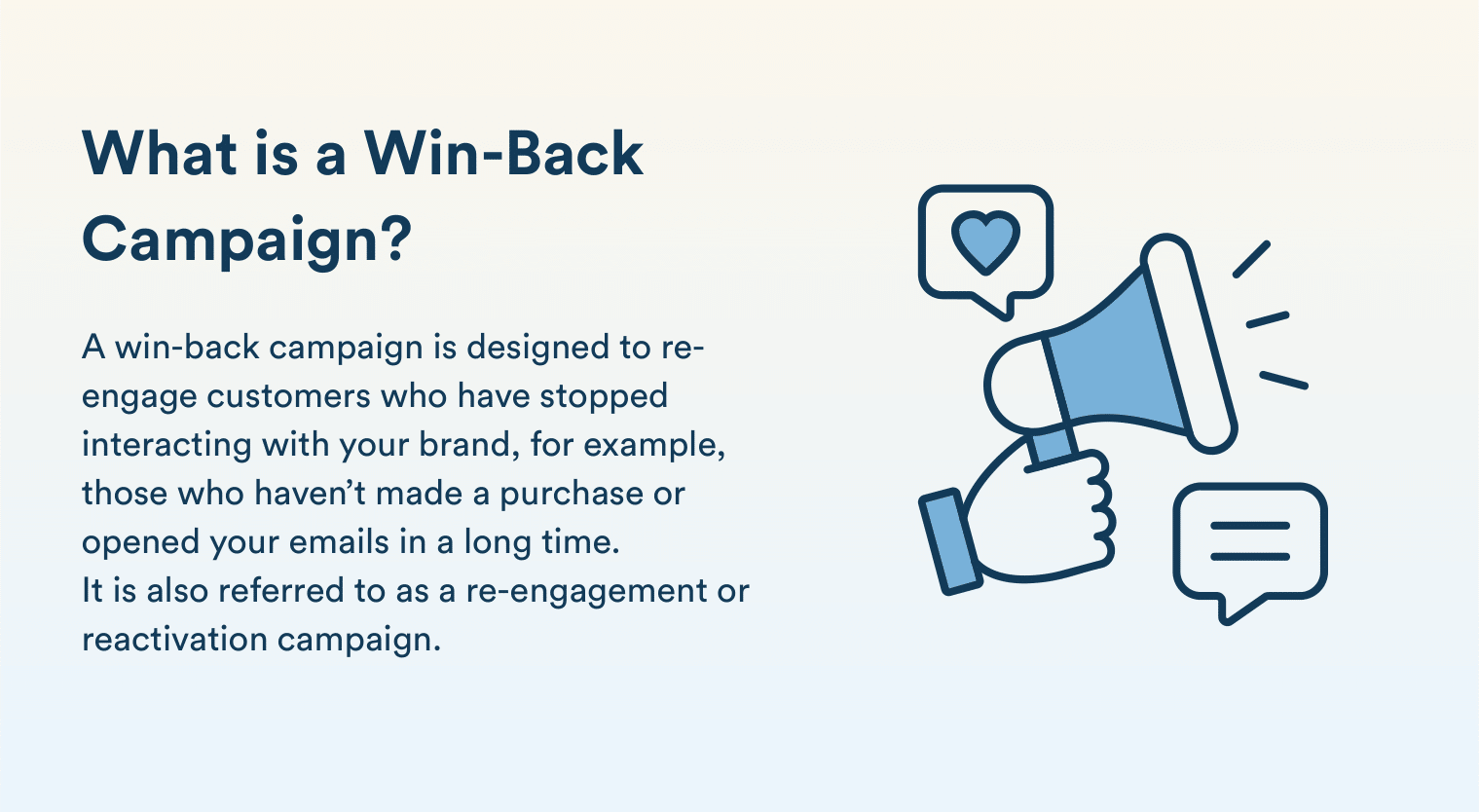
Funnel Stage: Retention/Reactivation
Channels: Email, SMS, Push
Win-back campaigns use personalized offers and messaging to re-engage dormant customers. These campaigns revive relationships with past buyers, reducing churn and increasing customer lifetime value.
7. Back-In-Stock Or Price-Drop Alerts
Real-time notifications when popular items return to inventory or prices drop.
Funnel Stage: Consideration/Conversion
Channels: Email, SMS, Push
These alerts create a sense of urgency and help customers act quickly on items they want, preventing missed opportunities and abandoned visits.
8. Subscription Renewal Reminders
Automated prompts reminding customers to renew subscriptions before they expire.
Funnel Stage: Retention/Loyalty
Channels: Email, SMS, In-App
Renewal reminders reduce churn by keeping subscribers engaged with timely messages. These ensure ongoing revenue from subscription-based models and enhance user satisfaction by preventing service interruptions.
Segmentation Strategies To Power E-Commerce Marketing Automation
Effective customer segmentation helps brands deliver highly personalized campaigns that boost engagement and conversions. Key strategies include:
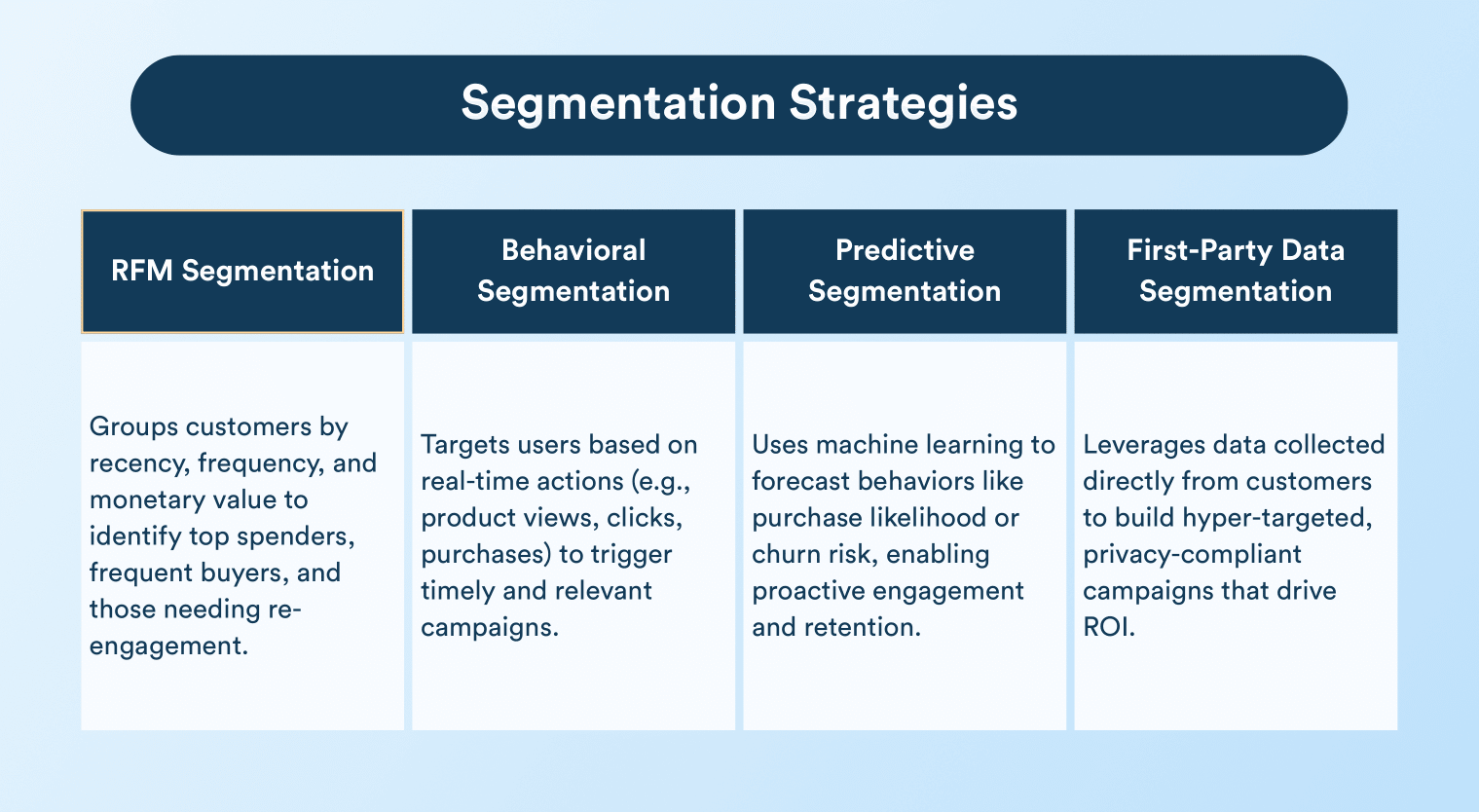
- RFM segmentation groups customers by recency, frequency, and monetary value to identify top spenders, frequent buyers, and those needing re-engagement.
- Behavioral segmentation targets users based on real-time actions (e.g., product views, clicks, purchases) to trigger timely and relevant campaigns.
- Predictive segmentation uses machine learning to forecast behaviors like purchase likelihood or churn risk, enabling proactive engagement and retention.
- First-party data segmentation leverages data collected directly from customers to build hyper-targeted, privacy-compliant campaigns that drive ROI.
Learn how to use AI capabilities in customer segmentation.
Why Omnichannel E-Commerce Marketing Automation Is Necessary
Cross-channel automation enables seamless omnichannel marketing automation campaigns by unifying data and workflows to deliver consistent, personalized messages across every touchpoint.
Building Cross-Channel Campaigns
The key to successful omnichannel e-commerce automation is coordinating campaigns across channels like email, push notifications, SMS, in-app messages, and WhatsApp. This orchestration ensures that messages are complementary, not repetitive or contradictory.
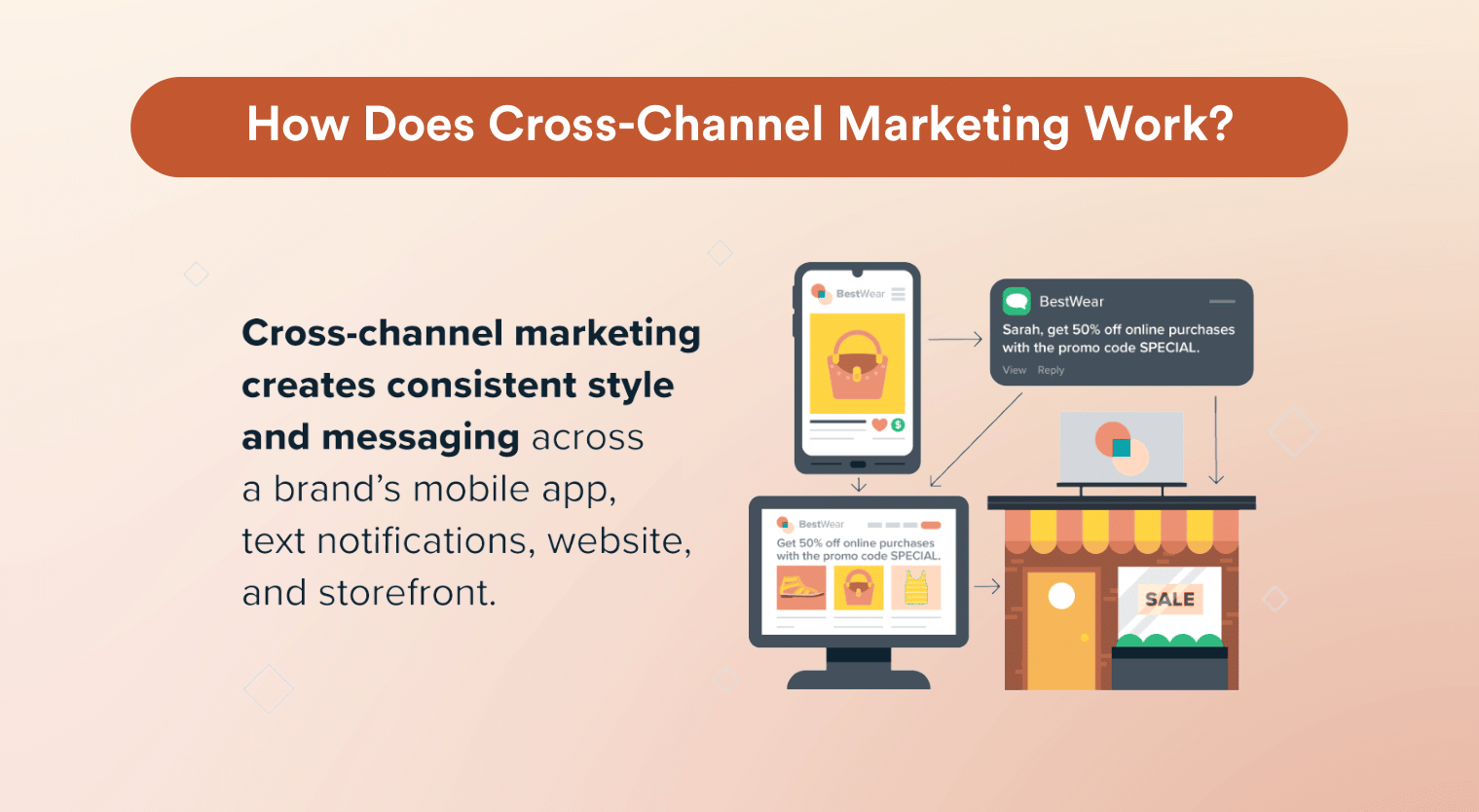
For example, an abandoned cart email may be followed by a push notification reminder and an SMS alert, each tailored to the communication style of that channel, reinforcing the message without overwhelming the customer.
CleverAI’s agentic capabilities enable these omnichannel campaigns to run autonomously. Instead of manually setting rules for every scenario, agentic AI can understand user behavior across channels, adapt messaging in real time, and ensure that each customer receives the most relevant communication at the best time and at scale.
What To Automate On Each Channel
- Email: Deep, content-rich messages such as welcome series, newsletters, and detailed product recommendations.
- Push Notifications: Instant alerts for time-sensitive offers, cart recoveries, and back-in-stock updates.
- SMS: Quick, direct reminders with high open rates, ideal for abandoned carts and flash sales.
- In-App Messaging: Contextual engagement triggered by real-time app behavior, like onboarding tips or product nudges during active sessions.
- WhatsApp: Personalized customer support, transactional updates, and conversational marketing with high engagement.
Consistent messaging across all channels strengthens brand recognition and trust, prevents fatigue and confusion by aligning with platform-specific behaviors, and ultimately drives higher engagement, conversions, and retention.
CleverTap’s Unified Platform Made Intelligent with Agentic AI
CleverTap unifies all channels within a single platform, enabling e-commerce brands to automate, segment, and optimize omnichannel campaigns seamlessly. With real-time analytics, AI-driven personalization, and intuitive journey builders, marketers can craft coordinated campaigns that boost customer lifetime value, without juggling multiple tools.
With the CleverAI agentic upgrade, the platform evolves into a self-optimizing marketing engine. CleverAI functions as a network of specialized agents, each playing a distinct role in scaling e-commerce marketing automation.
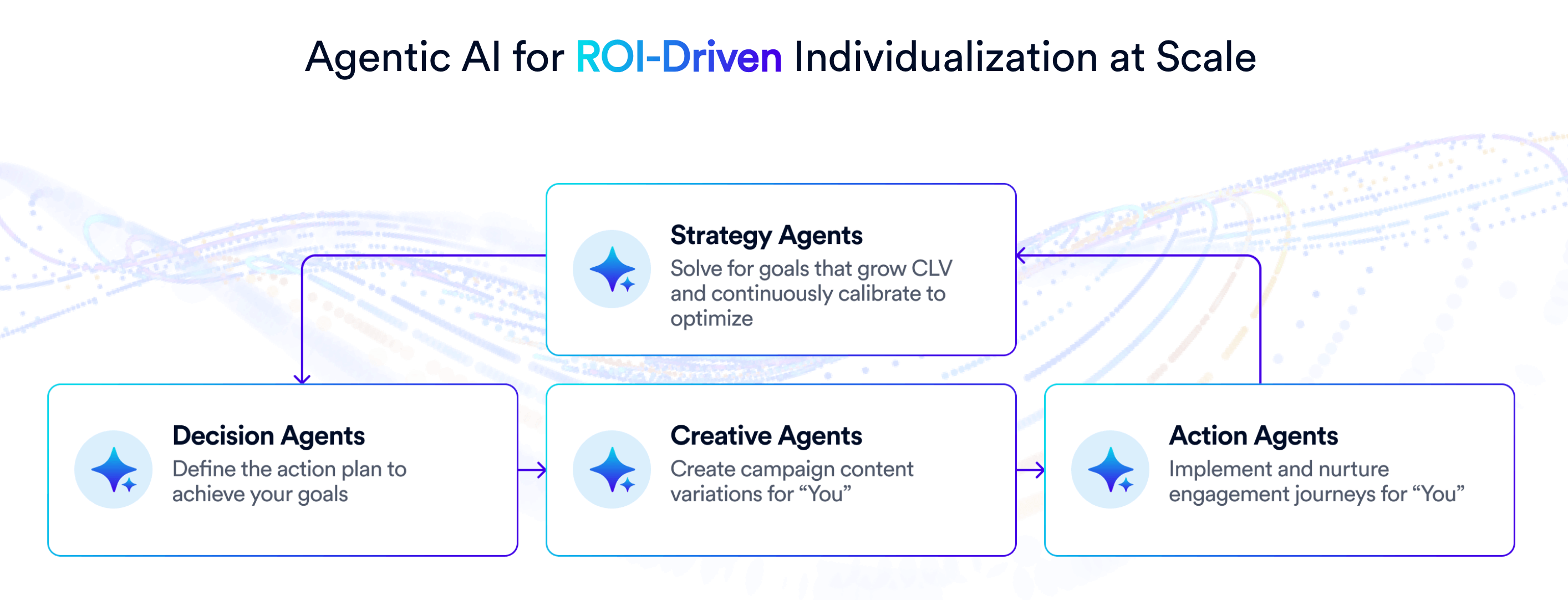
Instead of relying on a single model, CleverTap uses a multi-agent AI system to plan, decide, create, and act intelligently at scale:
- Strategy Agents define marketing objectives, orchestrate other agents, and continuously optimize workflows using real-time insights.
- Decision Agents match products, offers, or journeys to predicted intent, enabling precise personalization for every customer.
- Creative Agents generate tailored content and creatives aligned with broader campaign goals.
- Action Agents flawlessly execute campaigns, delivering the right messages at the right time across channels.
Together, these agents enable brands to autonomously adapt, personalize, and scale their marketing, unlocking smarter growth with minimal manual effort.
With CleverAI’s new agentic upgrade, e-commerce brands can unlock a new era of autonomous, intelligent marketing.
A Simple Step-by-Step Guide To Automate Your Marketing for E-Commerce
Starting with marketing automation involves a clear plan and ongoing optimization to maximize effectiveness. To help you, we have curated a simple guide that will help you build a strong foundation that fuels growth and enhances customer experiences.
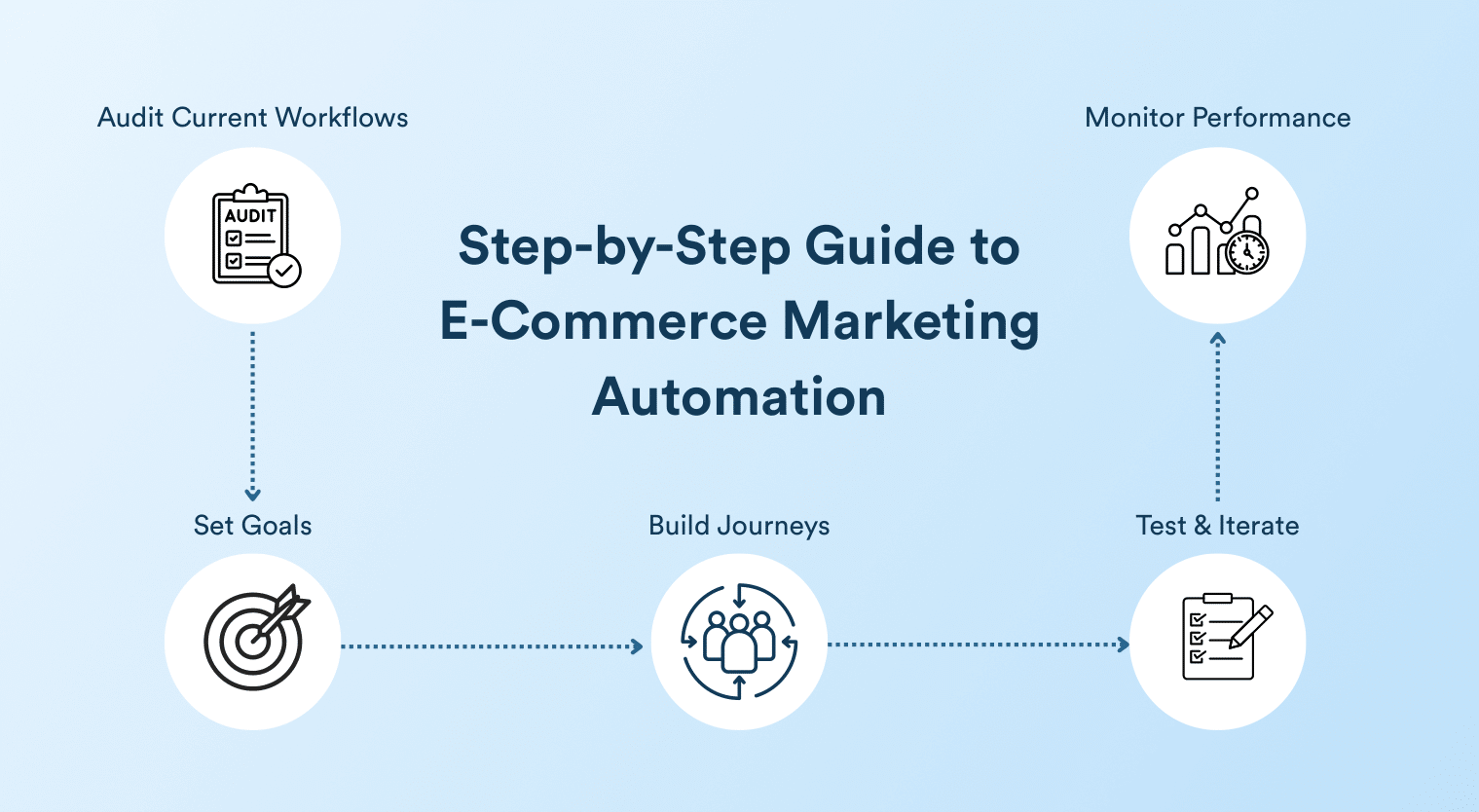
Step 1: Audit Current Workflows
Start by thoroughly reviewing your existing marketing workflows and customer touchpoints. Identify repetitive tasks that can be automated, such as welcome emails or cart abandonment reminders, and spot any gaps where automation could bring efficiency or stronger engagement.
Step 2: Set Goals
Establish clear, measurable objectives to guide your e-commerce automation strategy. Whether it’s increasing conversion rates, reducing cart abandonment, improving customer retention, or boosting overall engagement. By having specifics, you are providing targets to aim for and metrics to track progress.
Step 3: Build Journeys
Design automated customer journeys triggered by real-time behaviors. For example, creating an abandoned cart sequence that sends personalized reminder emails, push notifications, and SMS messages encourages users to complete their purchases. Using segmentation to tailor these journeys to customer preferences and lifecycle stages further increases relevance and conversion potential.
Step 4: Test and Iterate
Marketing automation is never a “set and forget” process. Test different message timings, content, and channels through A/B testing to understand what resonates best with your audience. Continuously analyze campaign results, learn from performance insights, and refine your workflows to boost effectiveness and ROI over time.
Step 5: Monitor Performance
With the help of CleverTap’s robust analytics dashboards, you can track live campaign metrics such as open rates, click-throughs, revenue generated, and retention rates. Real-time data empowers you to make informed decisions, quickly identify issues, and seize new opportunities. CleverTap’s integrated platform simplifies performance monitoring across all active campaigns.
Get the basics right when implementing enterprise marketing automation. Learn how.
How to Choose the Right E-Commerce Marketing Automation Platform
To help you choose the right e-commerce marketing automation platform, here are the key capabilities you should look for:
1. Easy Integration
Your platform should seamlessly connect with existing tech stacks, apps, websites, CRMs, and data warehouses, without extensive engineering overhead. CleverTap offers straightforward SDKs and APIs that unify customer data across multiple touchpoints, creating a single source of truth for personalization and segmentation.
2. Real-Time Analytics
Instant insights into customer behavior and campaign performance are essential for agile marketing.
CleverTap’s analytics provide granular, actionable data updates so marketers can monitor funnel drop-offs, engagement, and conversion rates in real time and adapt strategies accordingly.
3. AI/ML-Powered Recommendations
Advanced AI engines enable predictive targeting, personalized product recommendations, and churn prevention by anticipating customer needs.
With CleverAI’s new agentic upgrade, marketers can go beyond static recommendations. They can deploy autonomous marketing AI agents that proactively identify opportunities, launch personalized journeys, and optimize campaigns in real time, without manual input.
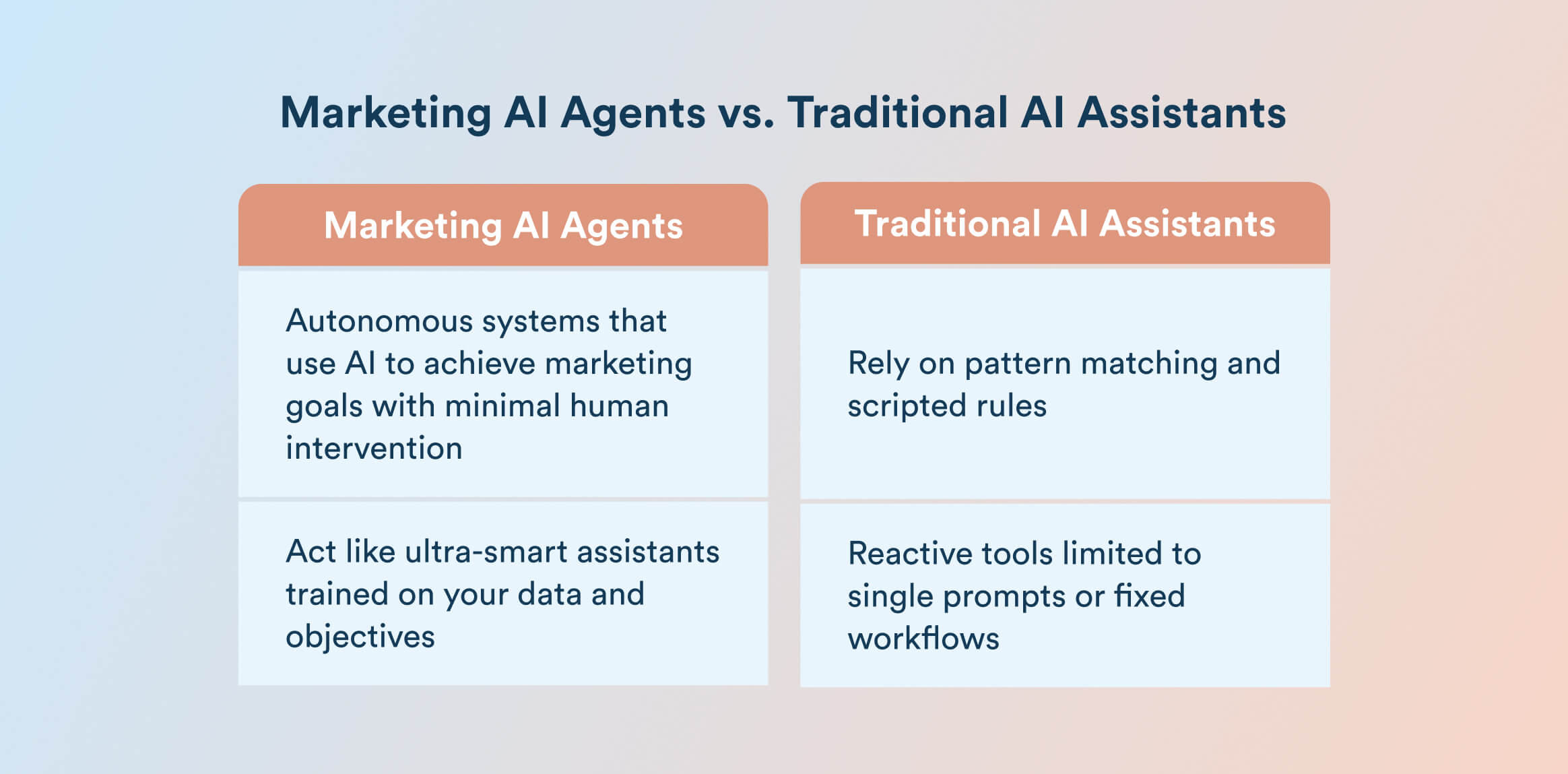
This means less time spent on campaign setup and more time driving growth through self-optimizing automation.
4. Journey Builder
Building and orchestrating complex, multichannel customer journeys should be intuitive and flexible. CleverTap’s visual, no-code Journey Builder empowers marketers to design adaptive workflows that respond dynamically to user actions, channel preferences, or inactivity, without needing engineering support.
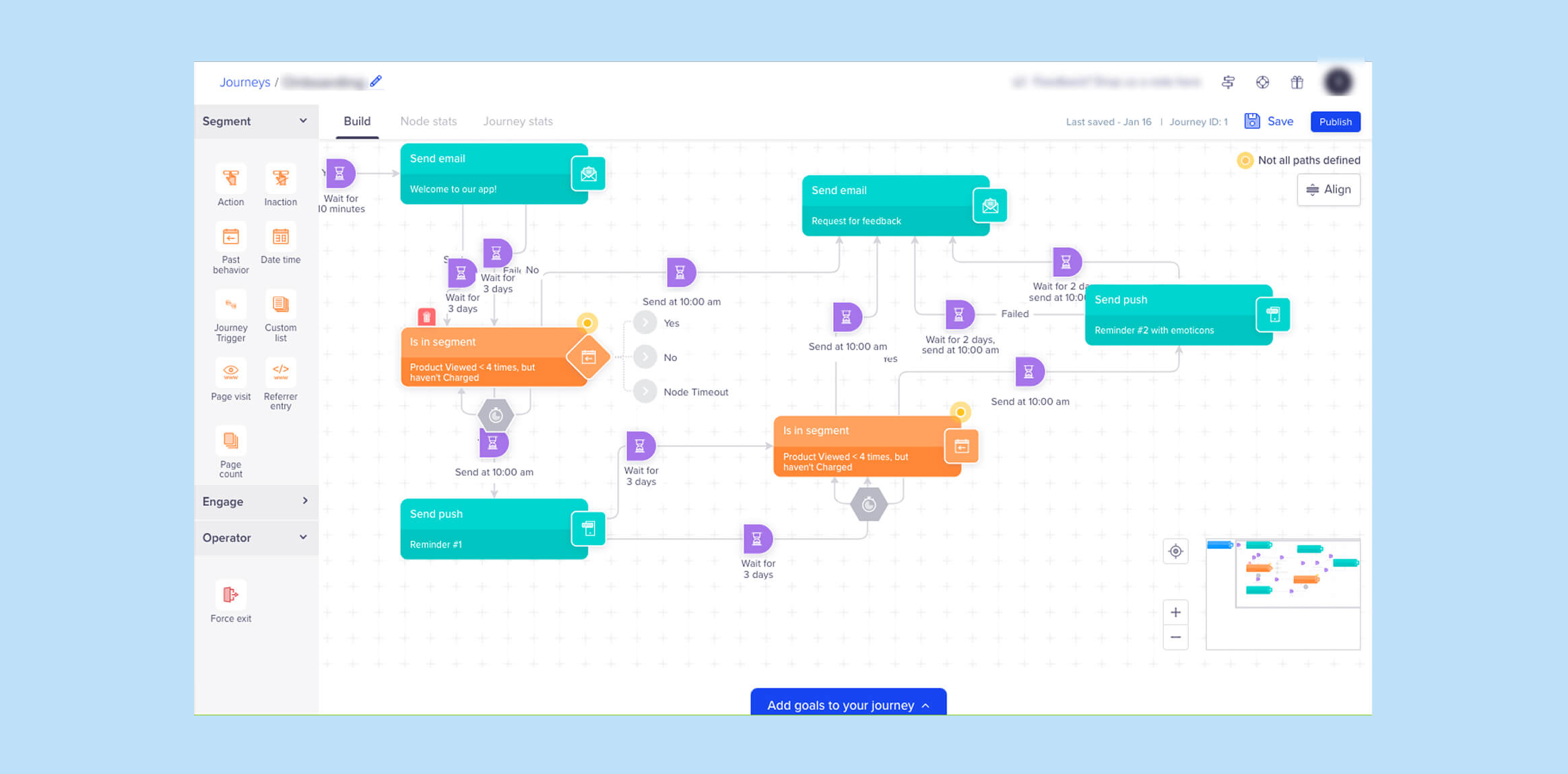
5. Channel Orchestration
Your platform must easily manage consistent messaging across email, push, SMS, in-app, and even WhatsApp channels. CleverTap’s unified platform supports full omnichannel orchestration, enabling brands to engage customers seamlessly at scale with personalized, timely communications.
Automation for E-Commerce With CleverTap
With a 561% ROI over three years reported in Forrester’s study, CleverTap demonstrates how an all-in-one platform with AI, real-time data, and channel integration can unlock substantial growth and customer lifetime value.
Smart e-commerce marketing automation humanizes the customer journey by blending technology with empathy. It turns transactions into lasting relationships, customers into advocates, and drives long-term growth and loyalty.
Ready to experience agentic marketing automation in action? Talk to our experts and see how CleverAI’s agentic capabilities can help you drive conversions and retention at scale.
Mrinal Parekh 
Leads Product Marketing & Analyst Relations.Expert in cross-channel marketing strategies & platforms.
Free Customer Engagement Guides
Join our newsletter for actionable tips and proven strategies to grow your business and engage your customers.

